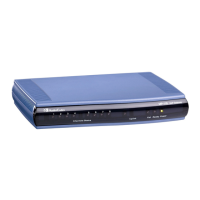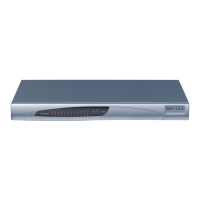2. Once the device receives such a request, it sends a SIP response message (using the
X-Detect header) to the remote party, listing all supported events that can be detected.
The absence of the X-Detect header indicates that no detections are available.
3. Each time the device detects a supported event, the event is notified to the remote
party by sending an INFO message with the following message body:
• Content-Type: application/X-DETECT
• Type = [CPT | FAX | PTT…]
• Subtype = xxx (according to the defined subtypes of each type)
Below is an example of SIP messages using the X-Detect header:
INVITE sip:101@10.33.2.53;user=phone SIP/2.0
Via: SIP/2.0/UDP 10.33.2.53;branch=z9hG4bKac5906
Max-Forwards: 70
From: "anonymous" <sip:anonymous@anonymous.invalid>;tag=1c25298
To: <sip:101@10.33.2.53;user=phone>
Call-ID: 11923@10.33.2.53
CSeq: 1 INVITE
Contact: <sip:100@10.33.2.53>
X- Detect: Request=CPT,FAX
SIP/2.0 200 OK
Via: SIP/2.0/UDP 10.33.2.53;branch=z9hG4bKac5906
From: "anonymous" <sip:anonymous@anonymous.invalid>;tag=1c25298
To: <sip:101@10.33.2.53;user=phone>;tag=1c19282
Call-ID: 11923@10.33.2.53
CSeq: 1 INVITE
Contact: <sip:101@10.33.2.53>
X- Detect: Response=CPT,FAX
INFO sip:101@10.33.2.53;user=phone SIP/2.0
Via: SIP/2.0/UDP 10.33.2.53;branch=z9hG4bKac5906
Max-Forwards: 70
From: "anonymous" <sip:anonymous@anonymous.invalid>;tag=1c25298
To: <sip:101@10.33.2.53;user=phone>
Call-ID: 11923@10.33.2.53
CSeq: 1 INVITE
Contact: <sip:100@10.33.2.53>
X- Detect: Response=CPT,FAX
Content-Type: Application/X-Detect
Content-Length: xxx
Type = CPT
Subtype = SIT
